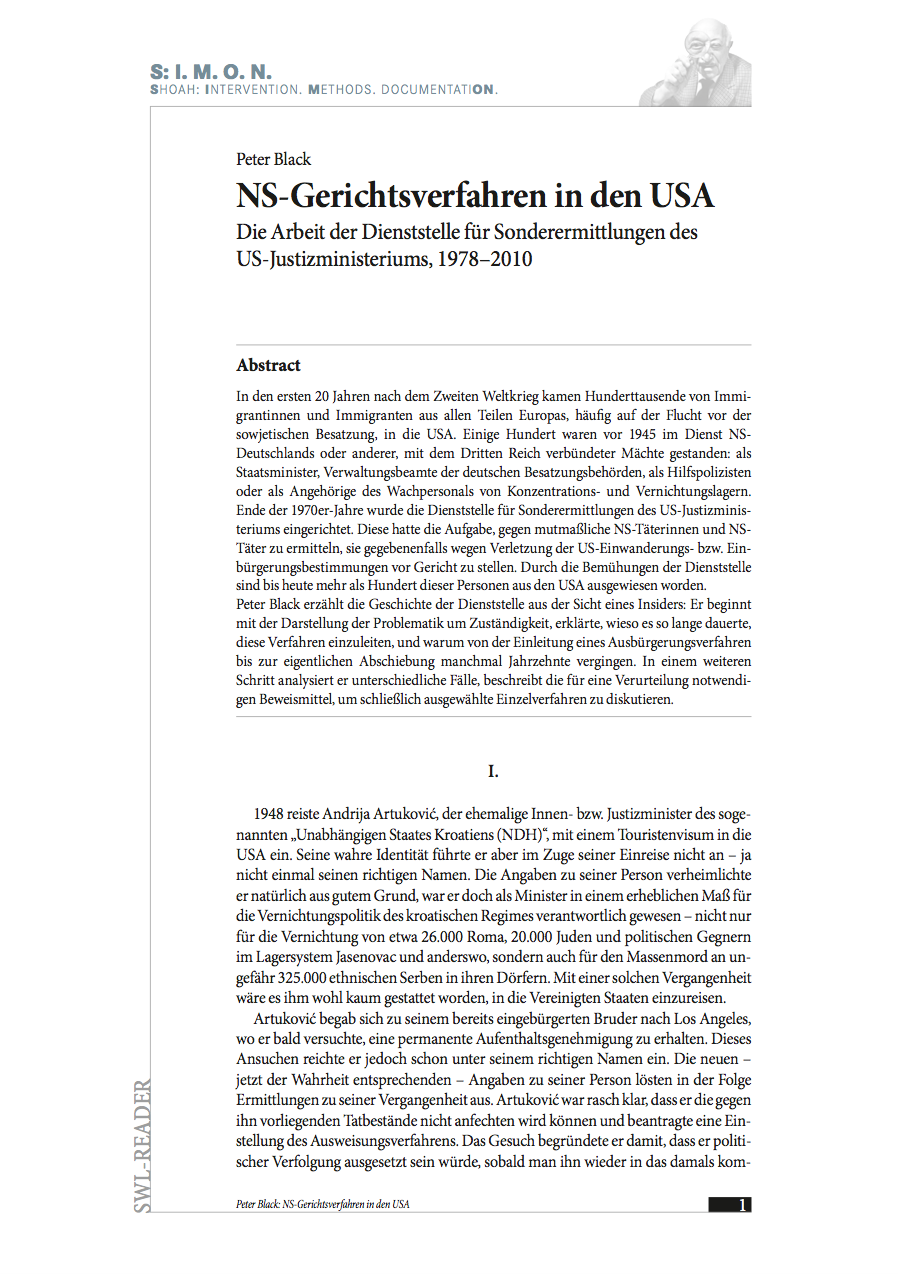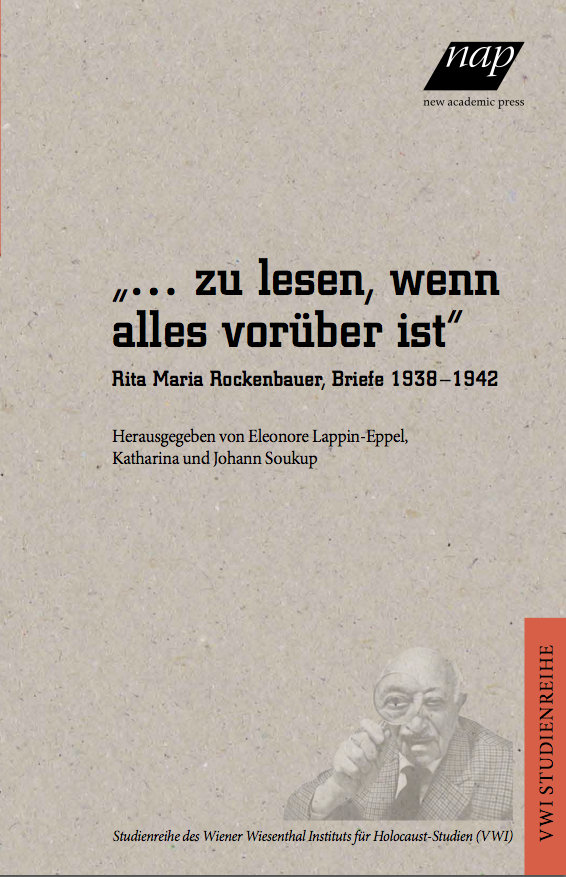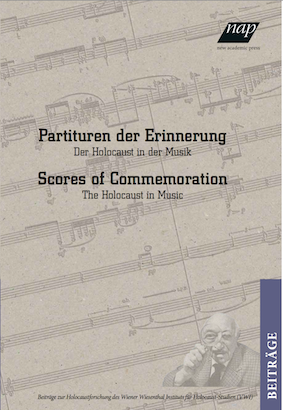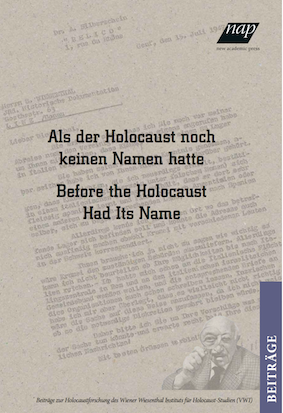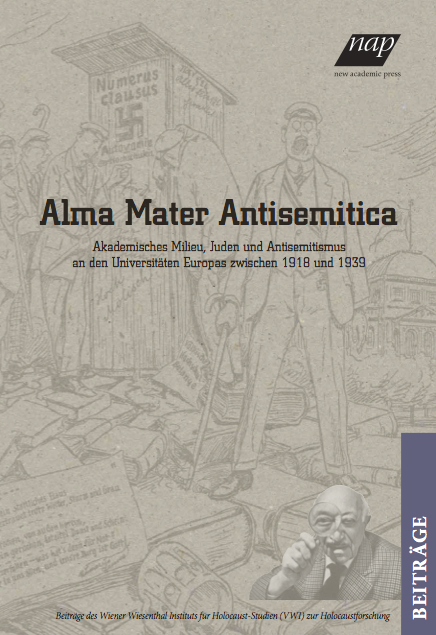 While the Jews inhabiting Bulgaria proper survived the Holocaust, the Jews from the Greek and Yugoslav lands administrated by the Bulgarian authorities in the years 1941 to 1944 were deported by those into German custody and murdered in Treblinka. The economics of this Holocaust story has attracted scant attention. The lecture draws evidence from the Bulgarian archives and addresses the Government’s spoliation policies carried out in the realm under its control. They nurtured behavioural patterns, mobilised social actors and fostered institutional networks. Reduced to its basic economic terms, the expropriation of the Jews boiled down to a forced offer of assets and personal belongings, which engendered strongly biased customer’s ‘markets’. This operation remapped segments of the economic tissue and further enhanced the role of the State through the arbitrary interventions of the Commissariat for the Jewish Affairs. In a broader perspective, the myriad of induced economic transactions contributed largely to the banalisation of antisemitism among different strata of the society.
While the Jews inhabiting Bulgaria proper survived the Holocaust, the Jews from the Greek and Yugoslav lands administrated by the Bulgarian authorities in the years 1941 to 1944 were deported by those into German custody and murdered in Treblinka. The economics of this Holocaust story has attracted scant attention. The lecture draws evidence from the Bulgarian archives and addresses the Government’s spoliation policies carried out in the realm under its control. They nurtured behavioural patterns, mobilised social actors and fostered institutional networks. Reduced to its basic economic terms, the expropriation of the Jews boiled down to a forced offer of assets and personal belongings, which engendered strongly biased customer’s ‘markets’. This operation remapped segments of the economic tissue and further enhanced the role of the State through the arbitrary interventions of the Commissariat for the Jewish Affairs. In a broader perspective, the myriad of induced economic transactions contributed largely to the banalisation of antisemitism among different strata of the society.
Editorial
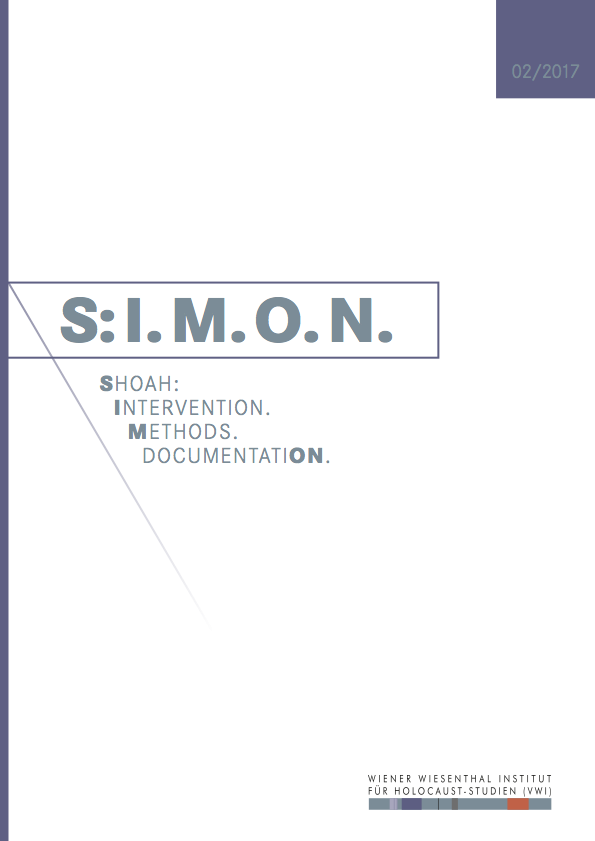 S:I.M.O.N. is an e-journal of the Vienna Wiesenthal Institute for Holocaust Studies (VWI). It appears twice a year in English and German language. S:I.M.O.N. aims at both a transnational and comparative history of the Holocaust and Jewish Studies in Central and Eastern Europe within the broader contexts of the European history of the 20th and 21st century, including its prehistory, consequences and legacies as well as the history of memory.
S:I.M.O.N. is an e-journal of the Vienna Wiesenthal Institute for Holocaust Studies (VWI). It appears twice a year in English and German language. S:I.M.O.N. aims at both a transnational and comparative history of the Holocaust and Jewish Studies in Central and Eastern Europe within the broader contexts of the European history of the 20th and 21st century, including its prehistory, consequences and legacies as well as the history of memory.
S:I.M.O.N. serves as a forum for discussion of various methodological approaches. The journal especially wishes to strengthen the exchange between researchers from different scientific communities and to integrate both the Jewish history and the history of the Holocaust into the different “national” narratives. It also lays a special emphasis on memory studies and the analysis of politics of memory. S:I.M.O.N. uses a double-blind review system, which means that both the reviewer’s and the author’s identities are concealed from each other hroughout the review process.
Shoah: The journal deals with the history of the Shoah from multidisciplinary, transnational and comparative perspectives. It seeks to integrate studies on Jews as well as on other groups of victims of the Holocaust, especially on Roma, and of so far less researched regions of (East) Central and (South) Eastern Europe.
Intervention. The journal reports on research projects and their transmission into public events. It also informs about current educational and remembrance programs.
Methods. The journal serves as a forum for the discussion of methodological approaches as, for instance, the everyday history, oral history, gender history, the history of violence, anti-Semitism and racism and the theory of memory and memory politics.
DocumentatiON. The journal contributes to critical approaches on using and interpreting archival materials in the 21st century.
Download the current issue S:I.M.O.N. 2017/2.
Articles
Kinga Frojimovics
Die Beziehung zwischen der Pester Israelitischen Gemeinde und der IKG Wien. Vom ‚Anschluß’ bis zum Beginn der Deportationen 1941
 The Relations between the Jewish Community of Pest and the Israelitische Kultusgemeinde Wien (IKG) from the 'Anschluß' until the Beginning of the Deportations, 1938-1941 In 1938 the Jewish Community of Pest (PIH)] and the Israelitische Kultusgemeinde Wien were the two largest Jewish communities of Central Europe. By 1938, the two Jewish communities had cultivated strong relationships with one another for over a century. However, the nature of the relationships between the two Jewish communities had changed drastically in 1938.
The Relations between the Jewish Community of Pest and the Israelitische Kultusgemeinde Wien (IKG) from the 'Anschluß' until the Beginning of the Deportations, 1938-1941 In 1938 the Jewish Community of Pest (PIH)] and the Israelitische Kultusgemeinde Wien were the two largest Jewish communities of Central Europe. By 1938, the two Jewish communities had cultivated strong relationships with one another for over a century. However, the nature of the relationships between the two Jewish communities had changed drastically in 1938.
As a consequence of the increasingly worsening official anti-Jewish discrimination, ties of social and legal aid had exclusively replaced any other kinds of relationships. Religious life, chiefly issues of kashrut, social aid for members of the community, as well as Emigration from Austria after the 'Anschluß', and issues concerning one’s Hungarian citizenship after the anti-Jewish legislation had been central to the mutual work of extending social and legal aid to one another.
A systematic study of the relationships between the two largest Central European Jewish communities between 1938 and 1941 will enable us to understand how these increasingly adversely influenced central institutions of Jewish life attempted to assist their members and one another during the first phase of the Holocaust. To show how the two communities collaborated and tried to help each other is crucial, since these Jewish institutions are routinely portrayed even in historical works as isolationist bodies that were utterly uninvolved and uninterested in the problems of the Jewish world in general. The study will explore how their ties between 1938 and 1941 (until the beginning of the mass deportation of Viennese Jews) influenced the behaviour of the two communities and their members both in the later phases of the Holocaust and its aftermath. The ties of legal and social aid provided a viable model as well as a context for later patterns of relationships within and also without the Jewish world.
SWL-Reader
During the first two decades following the Second World War, hundreds of thousands of migrants arrived in the United States of America from all parts of Europe, many of them having fled the Soviet occupation. Several hundred had been in service to Nazi Germany or other powers in league with the Third Reich before 1945: as state ministers, administrative officers of the German occupational forces, adjunct policemen or as guards at the concentration camps and extermination camps. In the late 1970s, the US Department of Justice established an Office for Special Investigations. It was their task to investigate alleged Nazi perpetrators, and, if applicable, to prosecute them for violation of the US immigration and naturalization laws. Their efforts resulted in the deportation from the United States of America of more than a hundred of these persons.
Peter Black recounted the story of this office from an insider's point of view. Beginning with an explanation of the problem of competence, he explained why it took so long for these cases to be initiated, and how it was possible that decades passed between the initiation of a deportation case and the actual deportation. He then went on to analyse a range of cases, described the required evidence and finally presented a discussion of selected individual cases.
Events
Zoltán Halasi
Duschehubka
 This text is the penultimate chapter of Zoltán Halasi's book Út az üres éghez (Road to an Empty Sky). With this work, which was first published in Hungarian, the author created a singular memorial to Polish-Jewish culture and its destruction. Setting out from the Yiddish Holocaust poem Dos lid funm ojsgehargetn jidischen folk by Itzhak Katzenelson, Halasi records what was lost in the Shoah in the course of nineteen compelling chapters. He takes on the grab of an art historian, a literary critic and a travel guide when he reports about a wooden synagogue and the Jewish quarter in Warsaw. In the role of a German banker, he illuminates the aims of the Nazi monetary policies, as a writer of SS brochures he highlights the absurdity of racism. Depicting a Selektion in the Warsaw ghetto, he shows the grim logic of compulsive acts in catastrophic situations, draws an image of the running of the extermination camp Treblinka. The cynical words of two German policemen provide an insight into the rituals of mass executions and introduce us to the craft of murder. The final chapter is an interplay of slithers of narrative by Jewish children on the run and by those who helped and hid them that borders on the unbearable.
This text is the penultimate chapter of Zoltán Halasi's book Út az üres éghez (Road to an Empty Sky). With this work, which was first published in Hungarian, the author created a singular memorial to Polish-Jewish culture and its destruction. Setting out from the Yiddish Holocaust poem Dos lid funm ojsgehargetn jidischen folk by Itzhak Katzenelson, Halasi records what was lost in the Shoah in the course of nineteen compelling chapters. He takes on the grab of an art historian, a literary critic and a travel guide when he reports about a wooden synagogue and the Jewish quarter in Warsaw. In the role of a German banker, he illuminates the aims of the Nazi monetary policies, as a writer of SS brochures he highlights the absurdity of racism. Depicting a Selektion in the Warsaw ghetto, he shows the grim logic of compulsive acts in catastrophic situations, draws an image of the running of the extermination camp Treblinka. The cynical words of two German policemen provide an insight into the rituals of mass executions and introduce us to the craft of murder. The final chapter is an interplay of slithers of narrative by Jewish children on the run and by those who helped and hid them that borders on the unbearable.
The chapter reproduced on the following pages has three parts: Part one is a Treblinka railway station master's report to the Polish Home Army. In the second part, a former Jewish detainee who managed to escape from the extermination camp Treblinka gives a literary treatment of his arrival at the camp. The final part consists of an inner monologue by the Treblinka extermination camp's director of administration.
The book will shortly be published in Polish at the Nisza publishing company in Warsaw. The German-speaking public was first presented with the work on December 1, 2015 at the Simon Wiesenthal Conference 2015. The German translation by Éva Zádor and Heinrich Eisterer is in progress.
Roumen Avramov: The Microeconomics of State Antisemitism. Expropriating the Jews under Bulgarian Rule, 1941–1944
„... zu lesen, wenn alles vorüber ist“
Rita Maria Rockenbauer, Briefe 1938 –1942
Wien 2014
Partituren der Erinnerung.
Der Holocaust in der Musik
Scores of Commemoration.
The Holocaust in Music
Wien 2015
Before the Holocaust Had Its Name. Early Confrontations of the Nazi Mass Murder of the Jews
Wien 2016
Akademisches Milieu, Juden und Antisemitismus an den Universitäten Europas zwischen 1918 und 1939
Academic Milieu, Jews and Antisemitism at European Universities between 1918 and 1939
Wien 2016


